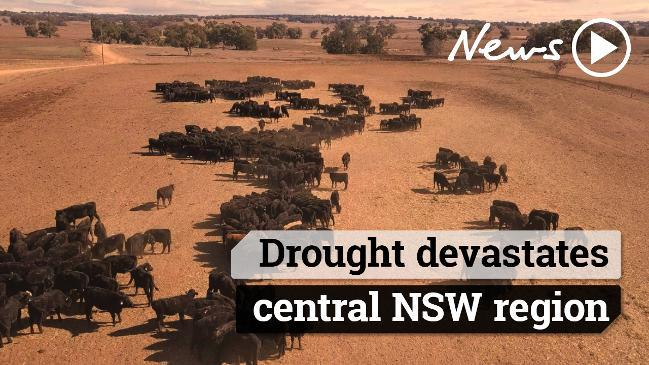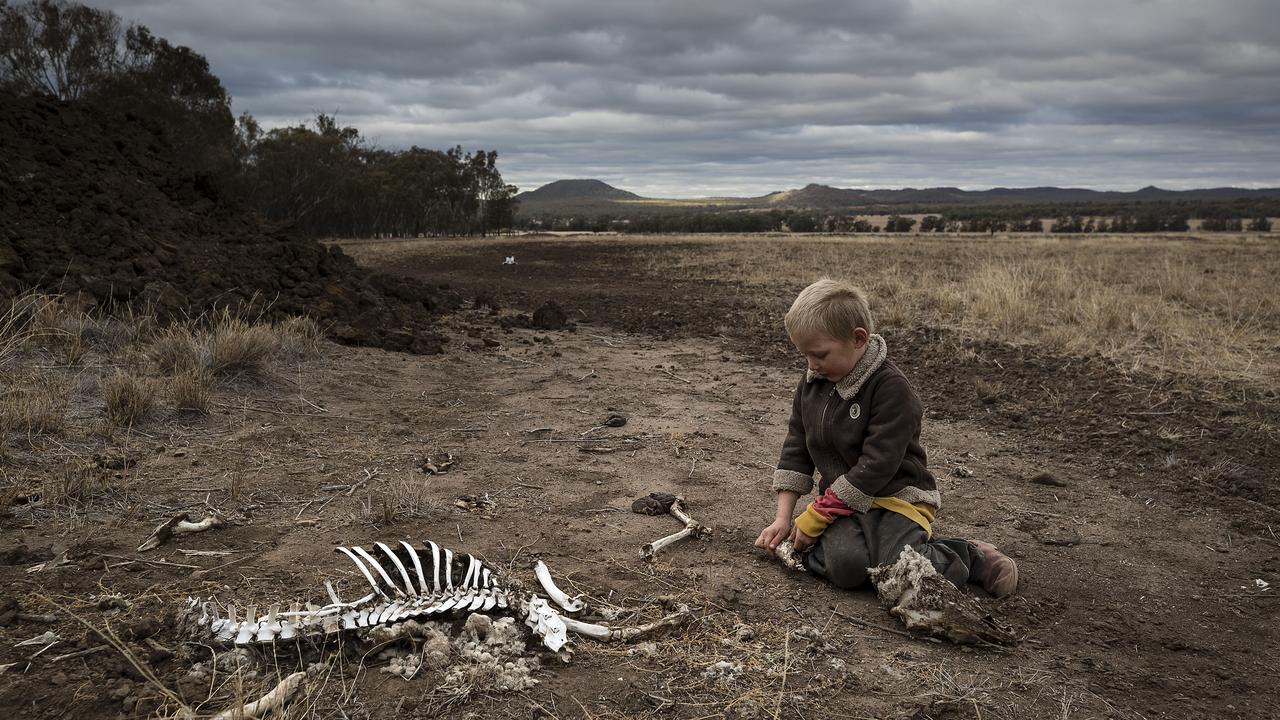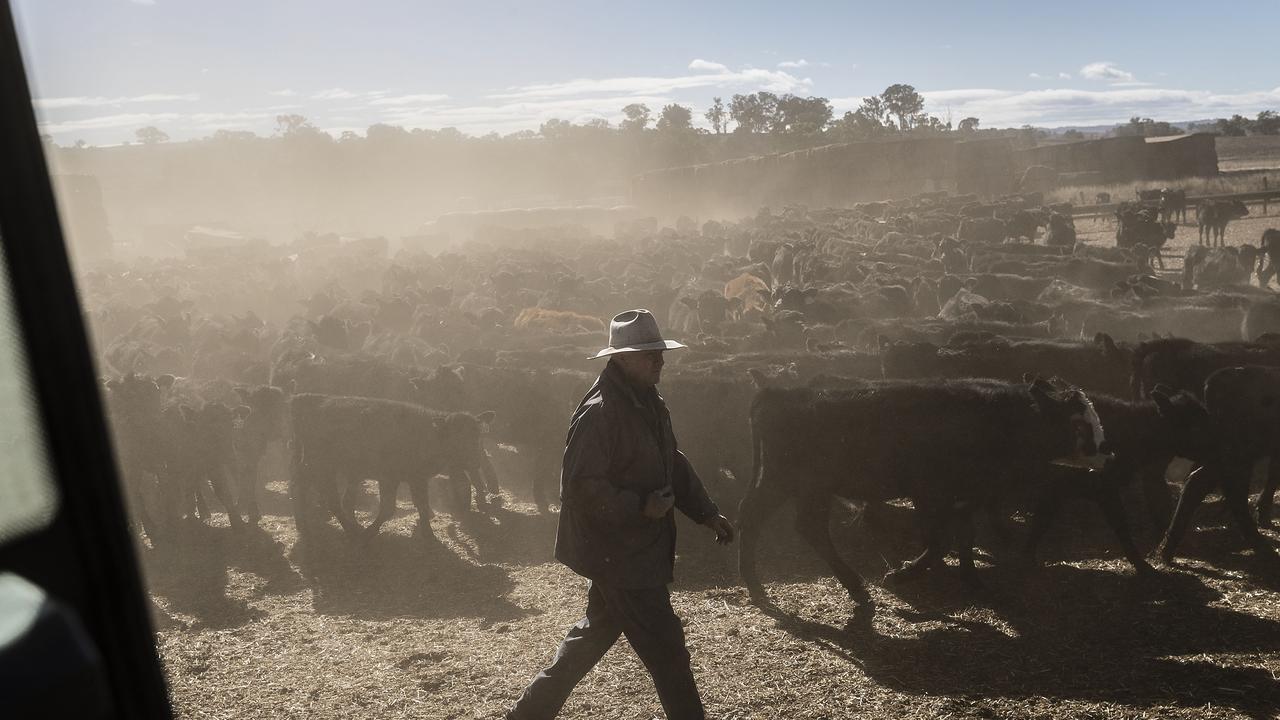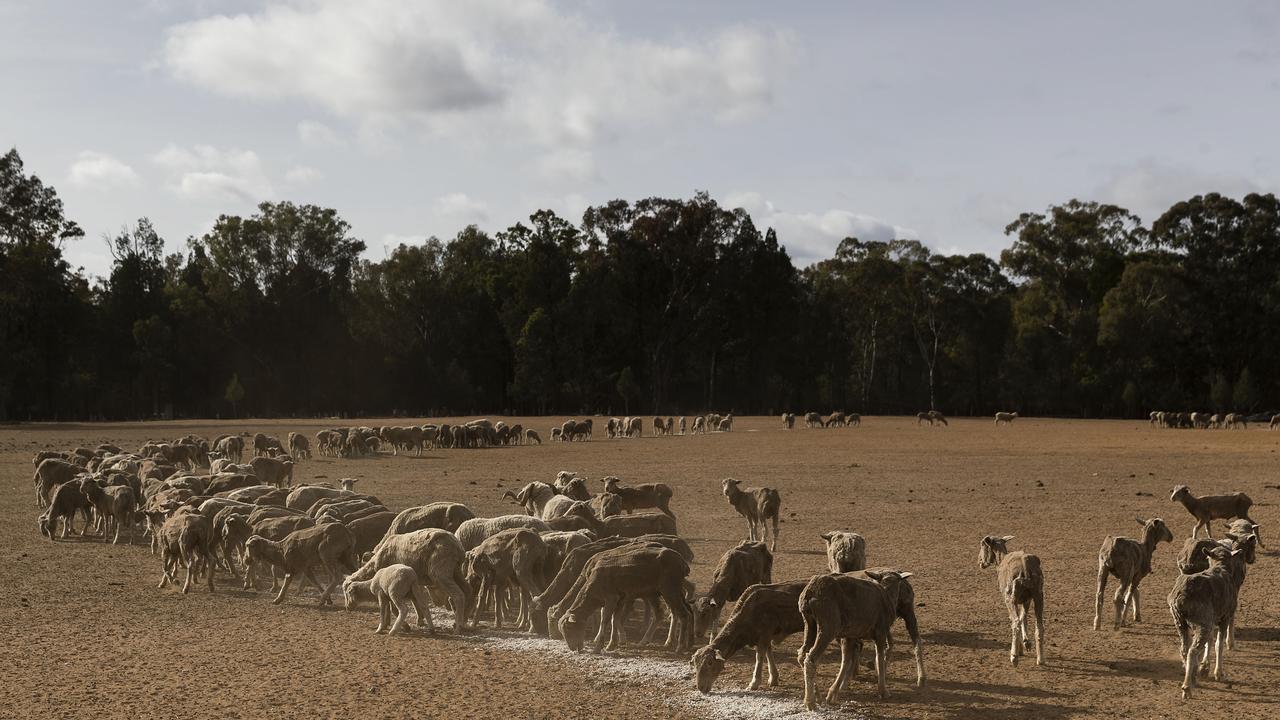Experts warn shoppers could soon feel the pinch at the checkout as our drought crisis deepens
YOUR supermarket trips could soon become a whole lot more expensive, with prices on track to skyrocket across Australia.

AUSTRALIA is in the grip of a horror drought — and we could soon be feeling the squeeze at the supermarket checkout.
At the moment, 98 per cent of NSW and almost two-thirds of Queensland is either in drought or is drought affected, with farmers in parts of Victoria, South Australia and Western Australia also suffering.
The situation has led to heartbreaking scenes across the country, with many farmers forced to slaughter their animals or watch them die in front of their eyes as they struggle to feed and water livestock.
• ‘Easy’ way Aussie dad makes $1600 a week
• Woman catches ‘evil’ neighbour stealing mail
• How this snap got photographer fired
Some farmers have described this crisis as the worse they’ve ever seen, but experts have warned producers aren’t the only ones who could feel the impact.
Richard Heath, executive director of agriculture research firm Australian Farm Institute, said while “every drought was different”, they generally led to grocery bills rising at double the rate of inflation.
Australia’s drought crisis: This is how you can help
“Every drought is different depending on what time of the year it starts and where it’s more severe, and that flows on to what food types might be affected,” Mr Heath said.
“Drought is not a new feature of Australian agriculture and generally what’s happened in the past is there has been in increase in grocery prices overall … generally the price has increased at about twice the rate of the consumer price inflation during equivalent periods of drought in the past.

“But exactly what foods will be affected and the timing of that is really quite hard to determine until after the fact when we can go back and see how it’s translated into different foods.”
Mr Heath said initially, the availability of meat may actually increase before dwindling and potentially pushing prices up.
“In the early stages of drought the availability of meat products quite often increase with farmers offloading stock because they can’t feed them. So there might be a lot more on the market as the drought takes hold, but when the season recovers farmers try to build up numbers again and potentially there could be less stock available for sale,” he explained.
“Grocery prices are obviously the way that the community overall feels the impact of drought when it gets severe enough to impact the availability of food, but before that farmers are obviously the first and most severely affected.

“The rural communities the farmers live in can also be severely affected because the income that farmers usually spend in the community just isn’t there. Retail and service industries in rural towns really suffer dramatically and they take a long time to recover, because the drought may break but it might be another six to 12 months before farmers start having decent incomes again.”
That sentiment was echoed by National Farmers’ Federation (NFF) CEO Tony Mahar, who said winter crops such as wheat, barley, oats and canola — which are essential for everyday items such as bread, biscuits and cooking oil — had been particularly hard hit, as well as livestock.
“It’s pretty serious — some parts of Australia have been in drought for five, six, seven years so it has been really challenging for parts of the industry,” Mr Mahar told news.com.au.
“Animals are stressed, farmers are stressed and families are stressed so it does have a large impact.
“There has been a very reduced grain harvest this year. Australian farmers export around two-thirds of what they produce because it’s such a small market, so food security is not an issue.”

But Mr Mahar explained that depending on other global factors, the grain shortage could impact livestock feed prices, which may in turn drive up grocery prices up for consumers.
“Going forward next year, chances are feed prices are going to be more expensive for chicken, pork and beef producers who will have to pay more for their feed including barley, oats and wheat. Their input into their beef, pork and chicken products are going to get more expensive and ultimately, it could have a flow on to consumer prices,” he said.
Mr Mahar said Australian farmers only got a fraction of government subsidies compared to farmers in Europe, Asia and the US and that any community and government support was welcome.
“Farmers are a tough, resilient group and we’ll push through this … but at the end of the day, our farmers produce such amazing quality food and we need to support them through this time,” he said.
The situation is so dire Agriculture Minister David Littleproud has just announced a review of the Farm Household Allowance (FHA), which provides help for farmers facing hardship, particularly during drought.

Farmers can now receive a fourth year of assistance, compared to just three years before the rule change.
“Government can’t make it rain and heartbreakingly we cannot save every farmer,” Mr Littleproud said.
“We cannot make decisions for them about whether they should buy feed in the hope it will soon rain, or when to sell off stock.
“But we can and do provide free expert advice through Rural Financial Counsellors and I urge farmers to use it.”



